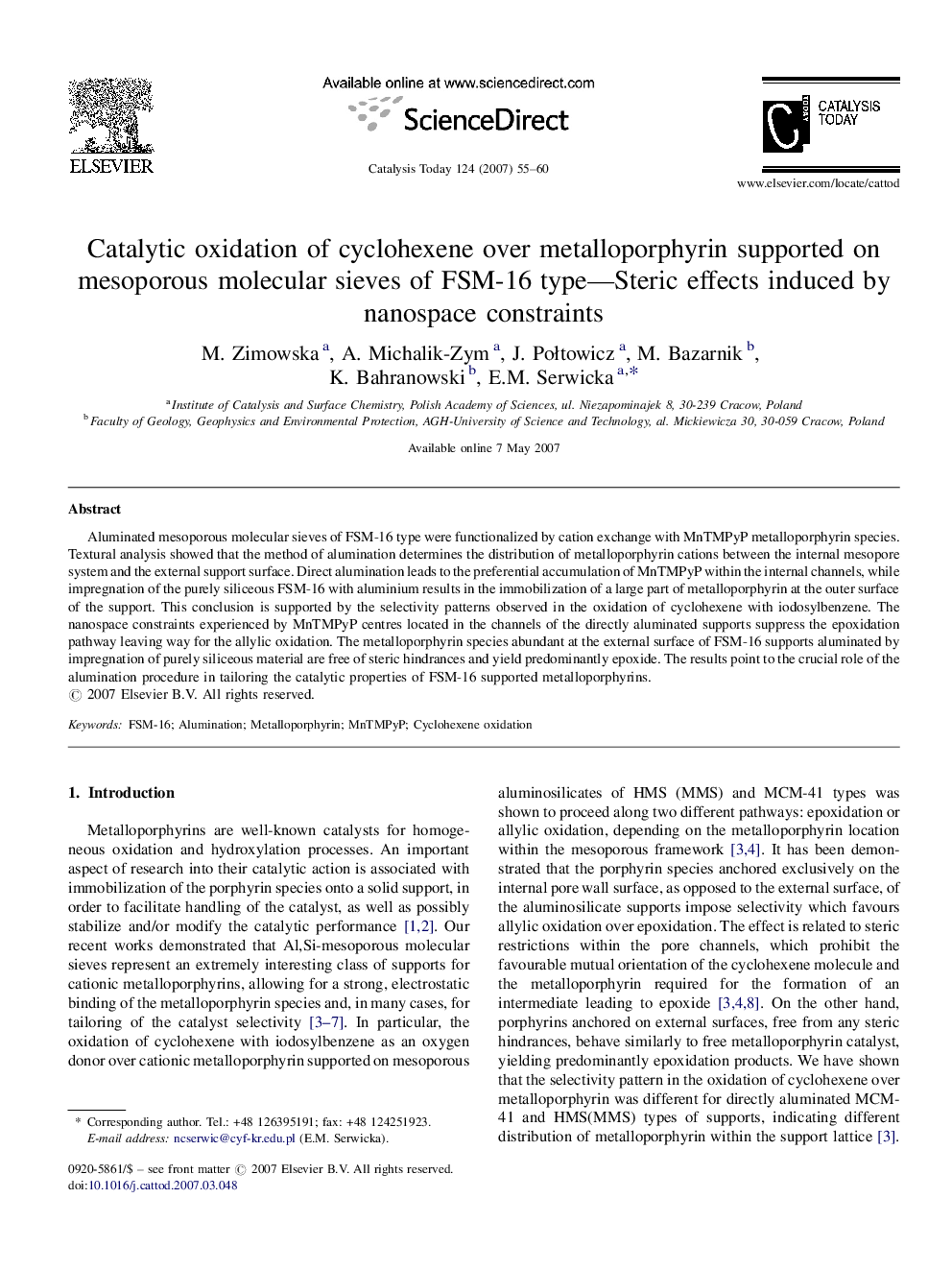| Article ID | Journal | Published Year | Pages | File Type |
|---|---|---|---|---|
| 58345 | Catalysis Today | 2007 | 6 Pages |
Aluminated mesoporous molecular sieves of FSM-16 type were functionalized by cation exchange with MnTMPyP metalloporphyrin species. Textural analysis showed that the method of alumination determines the distribution of metalloporphyrin cations between the internal mesopore system and the external support surface. Direct alumination leads to the preferential accumulation of MnTMPyP within the internal channels, while impregnation of the purely siliceous FSM-16 with aluminium results in the immobilization of a large part of metalloporphyrin at the outer surface of the support. This conclusion is supported by the selectivity patterns observed in the oxidation of cyclohexene with iodosylbenzene. The nanospace constraints experienced by MnTMPyP centres located in the channels of the directly aluminated supports suppress the epoxidation pathway leaving way for the allylic oxidation. The metalloporphyrin species abundant at the external surface of FSM-16 supports aluminated by impregnation of purely siliceous material are free of steric hindrances and yield predominantly epoxide. The results point to the crucial role of the alumination procedure in tailoring the catalytic properties of FSM-16 supported metalloporphyrins.
